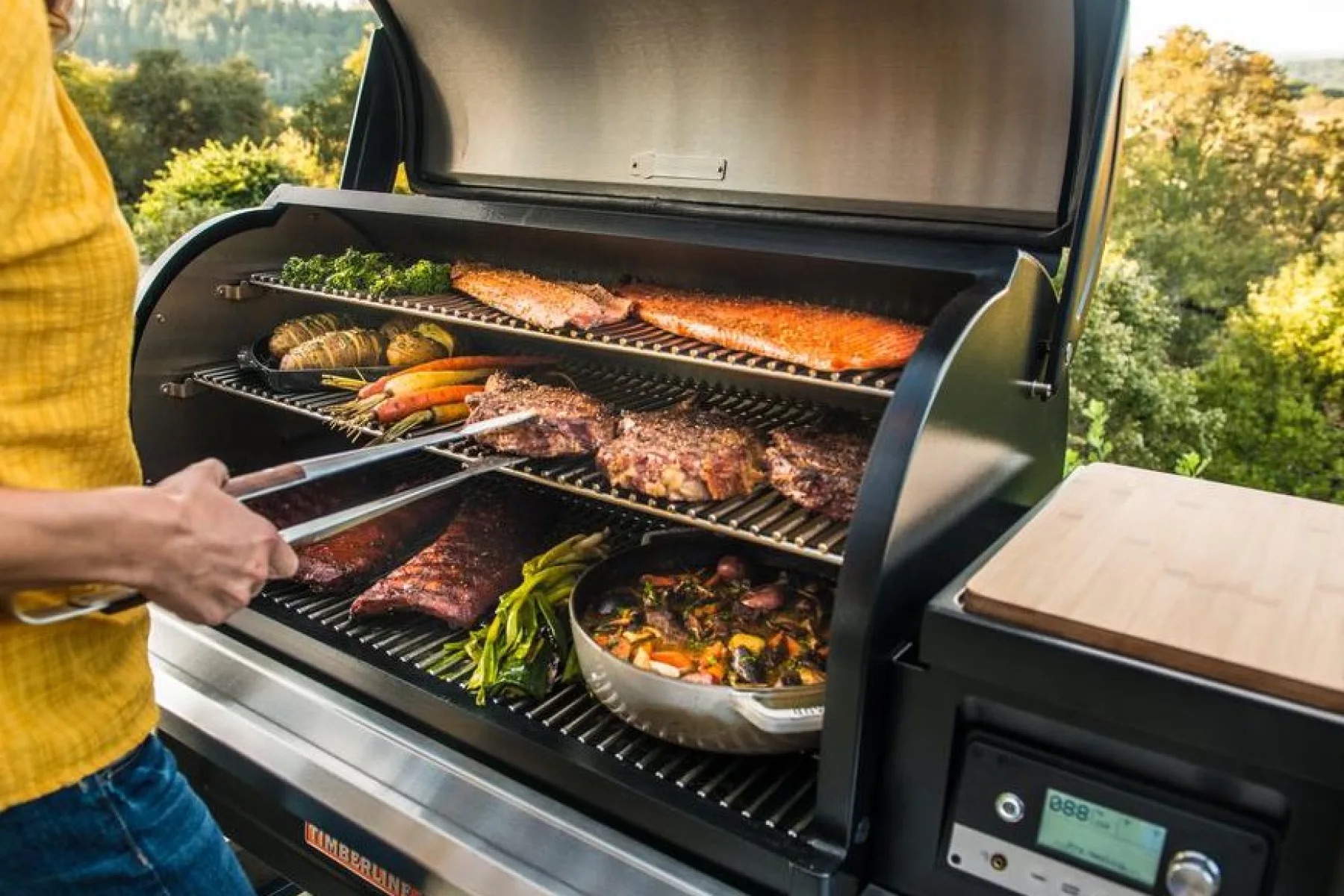

Articles
How Pellet Grills Work
Modified: September 2, 2024
Discover how pellet grills work and elevate your outdoor cooking experience with these informative articles. Find tips, recipes, and more to master the art of grilling.
(Many of the links in this article redirect to a specific reviewed product. Your purchase of these products through affiliate links helps to generate commission for Storables.com, at no extra cost. Learn more)
Introduction:
Grilling has always been a popular cooking method, with its ability to infuse food with a unique smoky flavor. Over the years, we have seen advancements in grilling technology, leading to the rise of pellet grills. But what exactly are pellet grills and how do they work?
A pellet grill, also known as a pellet smoker, is a modern outdoor cooking appliance that combines the convenience of an oven with the flavor-infusing abilities of a traditional grill. It uses wood pellets as a fuel source to create heat and smoke, allowing for precise temperature control and an enhanced grilling experience.
In this article, we will delve into the inner workings of pellet grills and explore the various components that make them such versatile and efficient cooking devices.
Key Takeaways:
- Pellet grills offer the best of both worlds by combining the convenience and precision of an oven with the rich, smoky flavor of traditional grilling. Their automated temperature control and versatility make them a game-changer for outdoor cooking.
- While pellet grills provide flavorful results and precise temperature control, it’s important to consider factors such as electricity dependency, initial cost, and weather sensitivity. Understanding these limitations can help make informed decisions when choosing a pellet grill for outdoor cooking.
Read more: How Do Wood Pellet Grills Work
What is a Pellet Grill?
A pellet grill is a type of outdoor cooking appliance that utilizes wood pellets as its primary fuel source. These grills are designed to combine the convenience of an oven with the delicious flavor provided by traditional grilling methods.
Wood pellets, made from compressed sawdust, are the fuel that powers pellet grills. These pellets are typically made from hardwoods such as hickory, mesquite, or applewood, which infuse the food with a rich smoky flavor. The pellets are loaded into a hopper, which feeds them into a metal combustion chamber called a fire pot.
One of the key components of a pellet grill is the auger. This screw-like mechanism is responsible for transferring the pellets from the hopper to the fire pot. As the auger turns, a small number of pellets are released into the fire pot, where they come into contact with a heating element.
The heating element in a pellet grill, often an electric igniter, ignites the pellets, creating a controlled fire. This fire produces both heat for cooking and smoke for flavoring the food. The temperature can be adjusted using a control panel, allowing for precise temperature control during the grilling process.
Pellet grills also feature a fan system, which helps regulate the temperature inside the grill. The fan circulates air to maintain a consistent temperature and ensure even heat distribution. This feature is especially useful for low and slow cooking, where maintaining a steady temperature is essential.
Unlike traditional grills that rely on manual adjustment of vents or burners, pellet grills offer automated temperature control. The control panel allows users to set the desired temperature, and the grill’s internal computer system adjusts the pellet feed and airflow to maintain the selected temperature throughout the cooking process.
Overall, pellet grills offer the best of both worlds. They provide the convenience and versatility of an oven, allowing for precise temperature control, while also delivering the smoky flavor that is synonymous with traditional grilling. Whether you’re grilling burgers, smoking ribs, or baking a pizza, a pellet grill can transform your outdoor cooking experience into something truly exceptional.
The Components of a Pellet Grill:
A pellet grill consists of several key components that work together to create a seamless and enjoyable grilling experience. Understanding these components will give you a better appreciation for how pellet grills function.
1. Hopper: The hopper is the storage container where wood pellets are held. It is typically located at the back or side of the grill. The hopper has a capacity ranging from a few pounds to several dozens of pounds, depending on the size of the grill. It feeds the pellets into the grill’s combustion chamber.
2. Auger: The auger is responsible for transferring the pellets from the hopper to the combustion chamber. This screw-like mechanism is typically powered by an electric motor and ensures a consistent flow of pellets throughout the grilling process.
3. Combustion Chamber/Fire Pot: The combustion chamber, also known as the fire pot, is where the pellets are burned to create heat and smoke. It is a metal container located near the bottom of the grill. The fire pot is designed to evenly distribute heat and provide a controlled environment for combustion.
4. Heating Element/Igniter: The heating element, often an electric igniter, ignites the pellets in the fire pot. It is responsible for starting the combustion process and generating the initial heat necessary for grilling. Once ignited, the pellets continue to burn and produce heat and smoke.
5. Control Panel: The control panel is where you can set and adjust the temperature of the pellet grill. It typically features a digital display and buttons or knobs that allow you to select the desired temperature and make other adjustments. Some advanced models even offer Wi-Fi connectivity and smartphone apps for remote control.
6. Fan System: Pellet grills are equipped with a fan system that helps regulate the temperature inside the grill. The fan circulates the air, ensuring even heat distribution and maintaining a consistent temperature throughout the cooking process.
7. Cooking Grates: The cooking grates are where you place your food for grilling. They are usually made of stainless steel or cast iron and provide a sturdy and durable surface for cooking. The size and material of the grates may vary depending on the specific model of the pellet grill.
8. Grease Management System: To prevent flare-ups and maintain cleanliness, pellet grills often come with a grease management system. This system consists of a drip tray or bucket that collects the drippings and a grease channel or chute that directs the grease away from the fire pot.
Understanding the various components of a pellet grill is essential for maximizing its functionality and ensuring optimal performance. With these components working together harmoniously, you can enjoy the convenience, precision, and exceptional flavor that pellet grills have to offer.
How Do Pellet Grills Work?
Pellet grills provide a unique cooking experience by combining the convenience of an oven with the flavor-enhancing abilities of wood-fired grilling. To understand how pellet grills work, let’s take a closer look at the key processes involved.
1. Pellet Ignition: The first step in the grilling process is igniting the wood pellets. When you turn on the pellet grill, the heating element, typically an electric igniter, starts the ignition process. It ignites a small number of pellets in the fire pot, creating a controlled fire.
2. Heat and Smoke Production: As the pellets burn, they produce both heat and aromatic smoke. The heat generated by the burning pellets is used for cooking the food, while the smoke infuses the food with a delicious smoky flavor. The temperature can be adjusted using the control panel, allowing for precise temperature control throughout the cooking process.
3. Auger Feed and Combustion: Pellet grills utilize an auger system to feed the pellets from the hopper to the fire pot. The auger, powered by an electric motor, transfers a small quantity of pellets at a time, ensuring a consistent fuel supply for the fire. As the pellets reach the fire pot, they burn and continue to produce heat and smoke.
4. Fan System: Pellet grills are equipped with a fan system that helps regulate the temperature inside the grill. The fan circulates the air, ensuring even heat distribution and maintaining a consistent temperature throughout the cooking process. It also helps prevent temperature fluctuations and hot spots.
5. Cooking Process: Once the grill reaches the desired temperature, you can place your food on the cooking grates. The heat from the burning pellets cooks the food, while the smoke adds a delicious smoky flavor. Pellet grills offer versatility in cooking methods, including grilling, smoking, baking, roasting, and even braising. The precise temperature control allows you to achieve desired doneness levels and enjoy consistent results every time.
6. Cleanup and Maintenance: After you’ve finished grilling, pellet grills offer easy cleanup and maintenance. The ash produced from burning the pellets is collected in a tray, making it simple to remove. Some pellet grills also feature a grease management system, which collects excess grease and drippings, preventing flare-ups and maintaining cleanliness.
Pellet grills offer a convenient and user-friendly grilling experience, making it easy for both seasoned grillers and beginners to achieve impressive results. With precise temperature control, versatile cooking options, and the added flavor of wood-fired smoke, pellet grills have become a popular choice for outdoor cooking enthusiasts.
The Pellet Grill Ignition Process:
The ignition process is a crucial step in operating a pellet grill, as it initiates the combustion of the wood pellets and sets the stage for the grilling experience. Let’s dive into the steps involved in the pellet grill ignition process.
1. Powering On: To start the ignition process, ensure that your pellet grill is plugged into a power source. Many pellet grills have an on/off switch, which you’ll need to activate to power on the grill.
2. Priming the Combustion Chamber: Before igniting the pellets, it’s important to prime the combustion chamber. This involves turning on the fan to create proper airflow and purge any stagnant air. It helps ensure efficient combustion and a consistent flame.
3. Setting the Temperature: Once the grill is powered on and the combustion chamber is primed, you can set the desired cooking temperature using the control panel. Pellet grills typically have digital temperature controls, allowing you to set the temperature with precision. The grill’s computer system will work to maintain the selected temperature during the cooking process.
4. Engaging the Ignition Cycle: Most pellet grills have an automated ignition cycle initiated by the control panel. When you activate the ignition cycle, the grill’s heating element, usually an electric igniter, comes into play. It begins to heat up and ignites a small number of wood pellets in the fire pot. The igniter remains active until the pellets are successfully ignited.
5. Combustion and Flame Stabilization: As the igniter heats and ignites the pellets, the combustion process begins. The burning pellets generate heat, and the grill’s fan system ensures proper airflow to support efficient combustion. Over time, the fire pot reaches a stable flame, producing a consistent source of heat and smoke.
6. Reaching the Desired Temperature: During the ignition process, the grill’s internal computer system monitors the temperature inside the grill. It adjusts the pellet feed rate and airflow to maintain the desired temperature you set on the control panel. The system ensures that the grill reaches and maintains the chosen temperature for the duration of your grilling session.
7. Ready to Grill: Once the grill has reached the desired temperature, it is ready for you to start grilling your food. Place the food on the cooking grates and let the pellet grill work its magic. The burning pellets infuse the food with a smoky flavor, providing a unique grilling experience.
Understanding the pellet grill ignition process is essential to safely and effectively operate the grill. By following the proper steps, you can achieve consistent ignition, maintain the desired temperature, and enjoy flavorful results every time you use your pellet grill.
When using a pellet grill, make sure to regularly clean the ash from the fire pot to maintain proper airflow and prevent temperature fluctuations.
Read more: How To Store Pellet Grill Pellets
Controlling Temperature on a Pellet Grill:
One of the key advantages of using a pellet grill is the ability to precisely control the cooking temperature. Maintaining a consistent temperature is crucial for achieving optimal cooking results. Here’s how you can control the temperature on a pellet grill:
1. Setting the Desired Temperature: Most pellet grills come equipped with a control panel that allows you to set the desired temperature. The control panel typically features a digital display and buttons or knobs to adjust the temperature in increments. Simply input the desired temperature and the grill’s internal computer system will work to maintain that temperature throughout the cooking process.
2. Fuel and Airflow Adjustment: The temperature on a pellet grill is regulated by controlling two main factors: the fuel supply and the airflow. The pellet grill’s auger system feeds the pellets into the fire pot, and the rate at which pellets are fed can be adjusted to increase or decrease the heat. Additionally, the grill’s fan system regulates the airflow, which affects the intensity of the fire. Adjusting these factors allows you to fine-tune the temperature to your desired level.
3. Monitoring and Adjusting: As you cook on a pellet grill, it’s important to monitor the temperature to ensure it remains at the desired level. Most pellet grills have a temperature probe that can be inserted into the food to monitor its internal temperature. Additionally, the grill’s control panel will display the current temperature inside the grill. If necessary, you can make adjustments to the temperature setting based on your cooking preferences and the doneness you desire.
4. Ramp-Up and Control: When you initially start the grill, it will go through a ramp-up phase to reach the desired temperature. During this phase, the grill will increase the pellet feed rate and fan speed to quickly heat up. Once the desired temperature is reached, the grill will go into control mode, where it adjusts the pellet and airflow rates to maintain the set temperature. This control process ensures steady heat and consistent cooking results.
5. Temperature Fluctuations: It’s important to note that minor temperature fluctuations are normal on pellet grills. Factors such as wind, outdoor temperature, and the type of food being cooked can cause slight variations in the grill’s temperature. However, the grill’s control system actively works to minimize these fluctuations and maintain a relatively steady temperature throughout the cooking process.
By understanding how to control the temperature on a pellet grill, you can achieve precise heat levels for various cooking techniques. Whether you’re searing a steak, smoking a brisket, or baking a pizza, the ability to maintain a consistent temperature ensures that your food is cooked to perfection and delivers the desired flavors and textures.
Pellet Grills and Flavor Infusion:
One of the biggest advantages of using a pellet grill is its ability to infuse food with a unique and delicious smoky flavor. The combination of wood pellets and controlled combustion creates a smoke that enhances the taste of the food. Let’s explore how pellet grills achieve this flavor infusion:
1. Wood Pellet Variety: Wood pellets, made from compressed sawdust, are the fuel source for pellet grills. These pellets are available in a variety of wood types, including hickory, mesquite, applewood, and more. Each wood type imparts its own distinct flavor profile to the food. For example, hickory offers a rich and bold smoky flavor, while applewood adds a slightly sweet and fruity aroma. You can experiment with different wood pellet flavors to customize the taste of your grilled dishes.
2. Combustion Process: Pellet grills operate on a combustion process, where the wood pellets burn and produce both heat and smoke simultaneously. As the pellets burn, they release flavorful compounds, such as lignin and cellulose, which contribute to the smoky taste of the food. The controlled combustion in pellet grills ensures that the smoke is gentle and evenly distributed, allowing for a consistent infusion of flavor.
3. Temperature Control: Maintaining a consistent cooking temperature is essential for flavor infusion. Pellet grills offer precise temperature control through their digital control panels, allowing you to choose the ideal temperature for your cooking needs. The low and slow cooking method, often used in pellet grills, allows the smoke to permeate the food slowly, resulting in a deeper and more pronounced smoky flavor.
4. Smoke Circulation: Pellet grills are designed with a fan system that circulates the smoke throughout the cooking chamber. This ensures that the smoke envelops the food evenly, infusing it with the desired smoky flavor. The fan also helps maintain consistent heat and airflow, which further contributes to flavor development.
5. Smoke Ring Formation: When using a pellet grill, you may notice the formation of a smoke ring, a pink discoloration on the outer layer of the meat. This smoke ring is a highly sought-after characteristic in barbecue, as it indicates proper smoke penetration and flavor infusion. The controlled combustion and gentle smoke produced by pellet grills contribute to the formation of a smoke ring, enhancing the visual appeal and taste of the grilled food.
The flavor infusion capabilities of pellet grills make them a favorite among grilling enthusiasts. By using different wood pellet flavors, mastering temperature control, and ensuring proper smoke circulation, you can elevate the taste of your grilled dishes and create memorable culinary experiences.
Advantages of Using a Pellet Grill:
Pellet grills have gained immense popularity among outdoor cooking enthusiasts, offering a range of advantages that elevate the grilling experience. Here are some key advantages of using a pellet grill:
1. Flavorful Results: Pellet grills are prized for their ability to infuse food with a delicious smoky flavor. The combination of wood pellets and controlled combustion creates a gentle and consistent smoke that enhances the taste of your dishes. Whether you’re grilling, smoking, or baking, the flavor infusion provided by a pellet grill adds a unique touch that traditional grills may not achieve.
2. Precise Temperature Control: Pellet grills excel at maintaining a steady cooking temperature. The digital control panel allows you to set the desired temperature with precision, and the grill’s internal computer system works to maintain that temperature throughout the cooking process. This level of control is particularly beneficial for low and slow cooking, where precise temperature management is crucial for achieving tender and juicy results.
3. Versatility in Cooking: Pellet grills offer versatility in cooking methods, allowing you to handle a variety of dishes. You can use them for grilling, smoking, roasting, baking, braising, and more. The ability to switch between cooking styles makes pellet grills a versatile outdoor cooking appliance that can cater to different culinary preferences and recipes.
4. Ease of Use: Pellet grills are user-friendly, making them suitable for both beginners and seasoned grillers. Once the grill is set up and preheated, you can simply set the temperature, load the food, and let the grill do its magic. The automated temperature control and consistent heat distribution eliminate the need for constant monitoring, allowing you to relax and enjoy the cooking process.
5. Wide Temperature Range: Pellet grills offer a wide temperature range, from as low as 180°F (82°C) for smoking to as high as 500°F (260°C) for searing. This temperature versatility allows you to cook a wide variety of foods, from slow-cooked ribs to juicy steaks. With the ability to adjust the temperature at your fingertips, you have full control over the cooking process.
6. Clean and Efficient Fuel: Wood pellets used in pellet grills are made from compressed sawdust and are highly efficient as a fuel source. They produce minimal ash compared to other grilling fuel options, reducing the need for frequent cleaning. Additionally, wood pellets are readily available and come in various flavors, allowing you to experiment and customize the taste of your grilled dishes.
7. Consistent Heat Distribution: Pellet grills feature a fan system that circulates the heat and smoke inside the cooking chamber, ensuring even heat distribution. No more worrying about hot spots or uneven cooking. The consistent heat helps achieve consistent results and enhances the overall cooking experience.
8. Convenient Accessories and Add-ons: Pellet grills often come with a range of convenient accessories and add-ons, such as side shelves, grilling racks, temperature probes, and more. These accessories enhance the functionality of the grill, providing additional cooking space and tools to assist in achieving your desired results.
Overall, pellet grills offer a combination of convenience, versatility, and flavor that sets them apart from other outdoor cooking options. Whether you’re a seasoned griller or a novice cook, a pellet grill can elevate your outdoor cooking game and deliver delicious results every time.
Limitations of Pellet Grills:
While pellet grills have numerous advantages, it’s important to be aware of their limitations. Understanding these limitations will help you make an informed decision and set appropriate expectations when using a pellet grill. Here are some key limitations to consider:
1. Dependency on Electricity: Pellet grills require electricity to power the control panel, igniter, and fan system. This means you’ll need access to electricity or a generator to operate the grill effectively. If you’re planning to use the grill in remote or off-grid locations without power sources, pellet grills may not be the most suitable option.
2. Initial Cost: Pellet grills generally have a higher upfront cost compared to traditional charcoal or gas grills. This is due to the advanced technology and components involved in their construction. The cost can vary depending on the brand, size, and additional features of the pellet grill. However, it’s important to consider the long-term value and benefits that pellet grills offer when assessing their overall cost.
3. Pellet Availability: While wood pellets are widely available, the range of flavors and brands may vary depending on your location. It’s essential to ensure a consistent supply of quality wood pellets to maintain the desired flavor and performance of your pellet grill. Check local availability or consider purchasing pellets in bulk to avoid running out during grilling sessions.
4. Weather Sensitivity: Like any outdoor cooking appliance, pellet grills can be affected by extreme weather conditions. High winds, heavy rain, or extremely cold temperatures can impact the grill’s ability to maintain stable temperatures or cause difficulties in the ignition process. It’s important to consider weather conditions and take appropriate precautions when using a pellet grill outdoors.
5. Cooking Capacity: Although pellet grills come in different sizes, their cooking capacity may be limited compared to larger traditional grills or smokers. If you often need to cook for large gatherings or have a sizable cooking surface requirement, you may need to consider a larger pellet grill or use additional cooking equipment alongside your pellet grill.
6. Cooking Time: Pellet grills primarily operate on the low and slow cooking method, which can be time-consuming. Achieving the desired level of tenderness and flavor often requires longer cooking times compared to high-heat grilling methods. While this slower cooking process leads to enhanced flavors and textures, it’s important to plan accordingly, especially when cooking for time-sensitive occasions.
7. Limited Direct Flame Cooking: Some pellet grills may have limitations when it comes to direct flame cooking. While pellet grills can produce a sear through radiant heat, achieving a direct flame for intense searing may be challenging. This can affect the ability to create a charred crust on certain foods, such as steaks or burgers. However, accessory add-ons like grill grates or searing grates can help mitigate this limitation.
Understanding the limitations of pellet grills allows you to make informed decisions and work around any challenges they may present. Despite these limitations, pellet grills remain a popular choice due to their flavor infusion, temperature control, and versatile cooking capabilities.
Read also: 10 Best Pellet Grill for 2025
Conclusion:
Pellet grills have revolutionized the outdoor cooking experience, offering a unique combination of convenience, flavor, and versatility. These grills use wood pellets as a fuel source to produce heat and smoke, allowing for precise temperature control and flavor infusion in your grilled dishes.
Throughout this article, we have explored the inner workings of pellet grills, from their components to the ignition process and temperature control. We’ve also discussed the advantages of pellet grills, including the ability to achieve delicious smoky flavors, the versatility in cooking methods, and the ease of use they offer.
However, it’s important to also consider the limitations of pellet grills. Factors such as their dependency on electricity, the initial cost, and potential weather sensitivity should be taken into account when deciding if a pellet grill is the right fit for your outdoor cooking needs.
Despite the limitations, pellet grills continue to gain popularity among grilling enthusiasts due to their consistent heat distribution, precise temperature control, and the wide range of cooking possibilities they offer. Whether you’re grilling, smoking, baking, or roasting, a pellet grill can enhance your culinary creations and provide a unique and enjoyable grilling experience.
So, if you’re looking to elevate your outdoor cooking game and delight your taste buds with smoky and flavorful dishes, consider investing in a pellet grill. Explore different wood pellet flavors, experiment with various recipes, and enjoy the convenience, versatility, and taste that a pellet grill brings to your backyard or outdoor adventures.
Remember to embrace the art of grilling, experiment with different techniques, and most importantly, have fun as you embark on your pellet grilling journey. Happy grilling!
Frequently Asked Questions about How Pellet Grills Work
Was this page helpful?
At Storables.com, we guarantee accurate and reliable information. Our content, validated by Expert Board Contributors, is crafted following stringent Editorial Policies. We're committed to providing you with well-researched, expert-backed insights for all your informational needs.
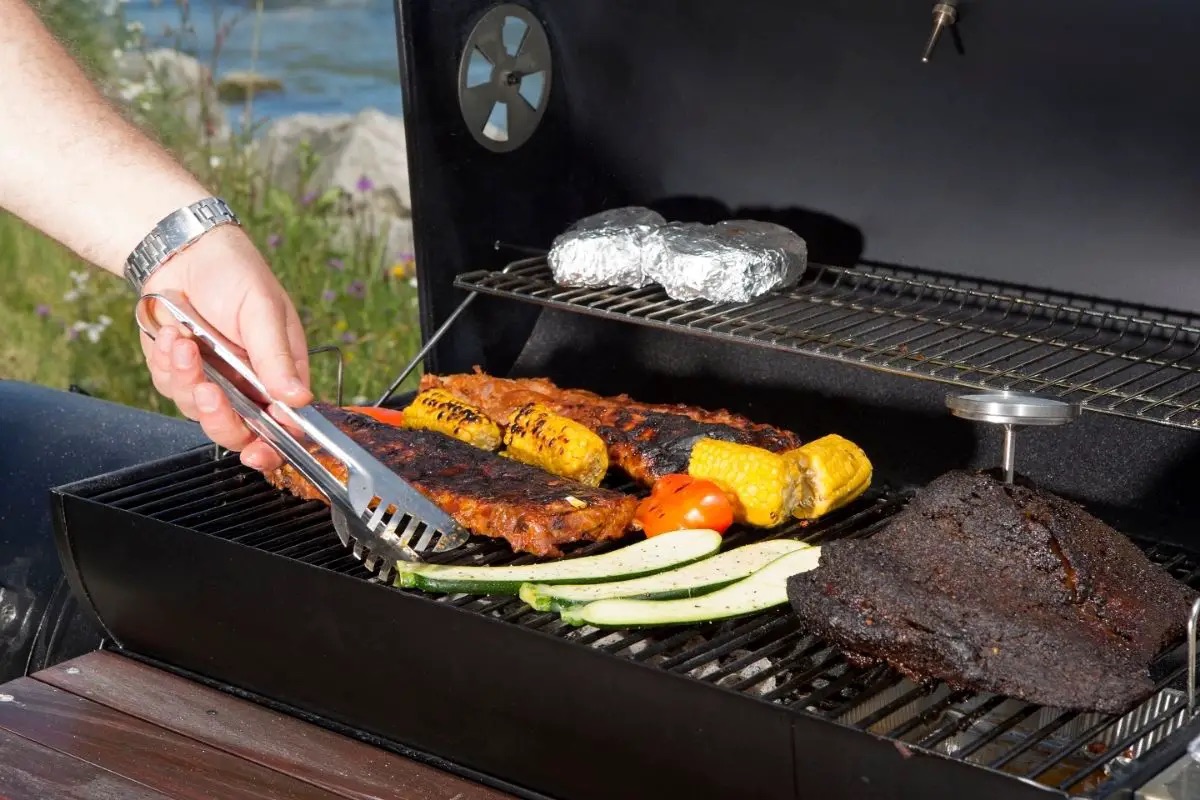
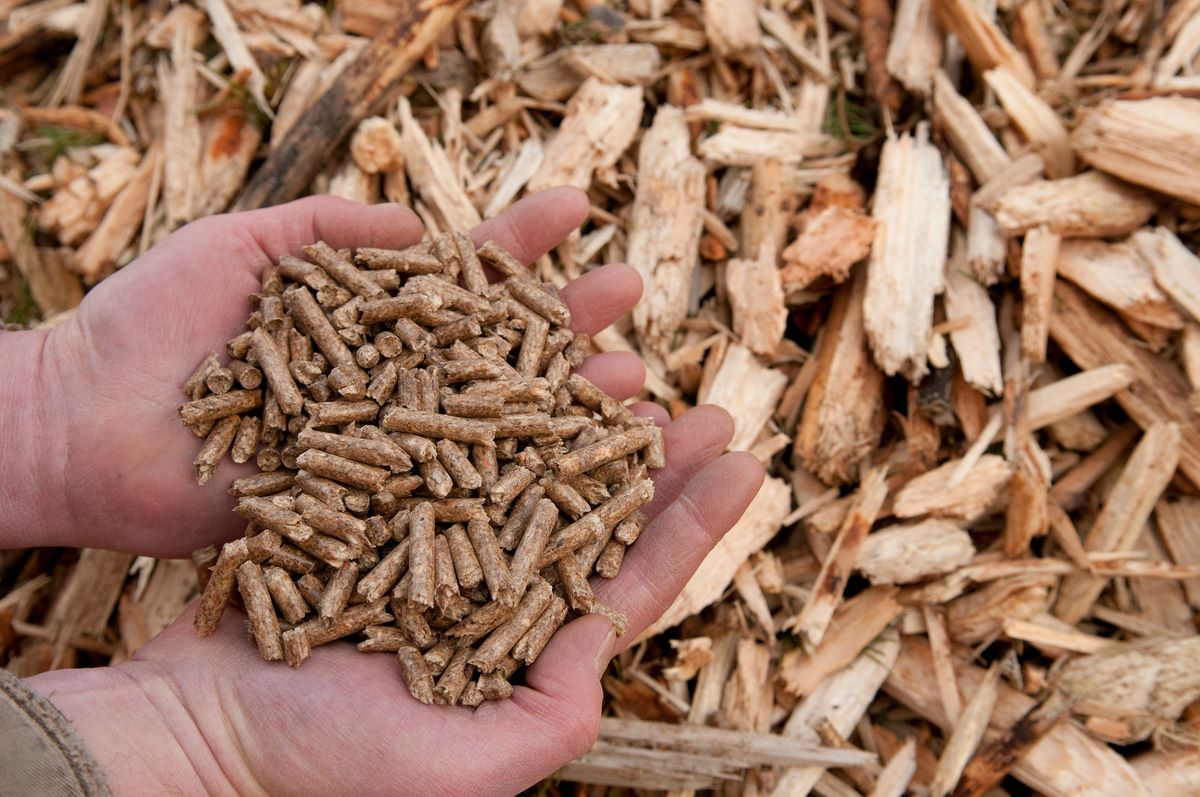
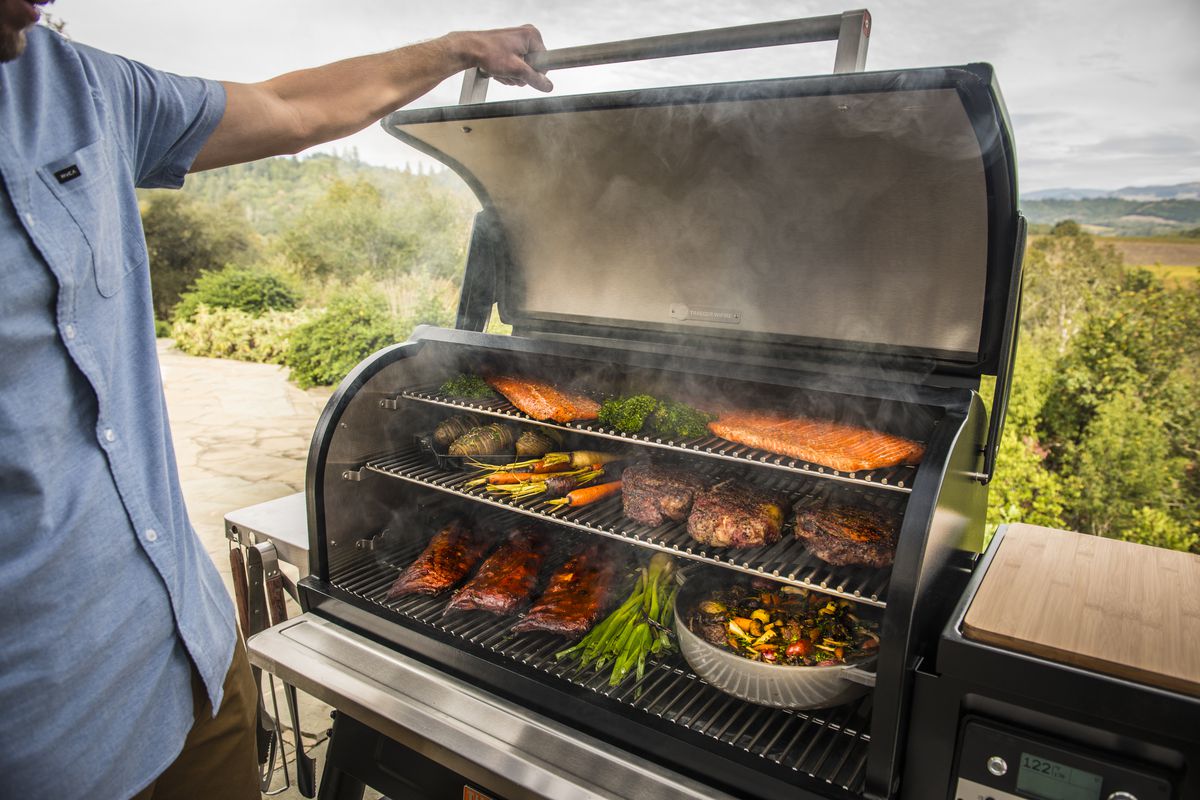
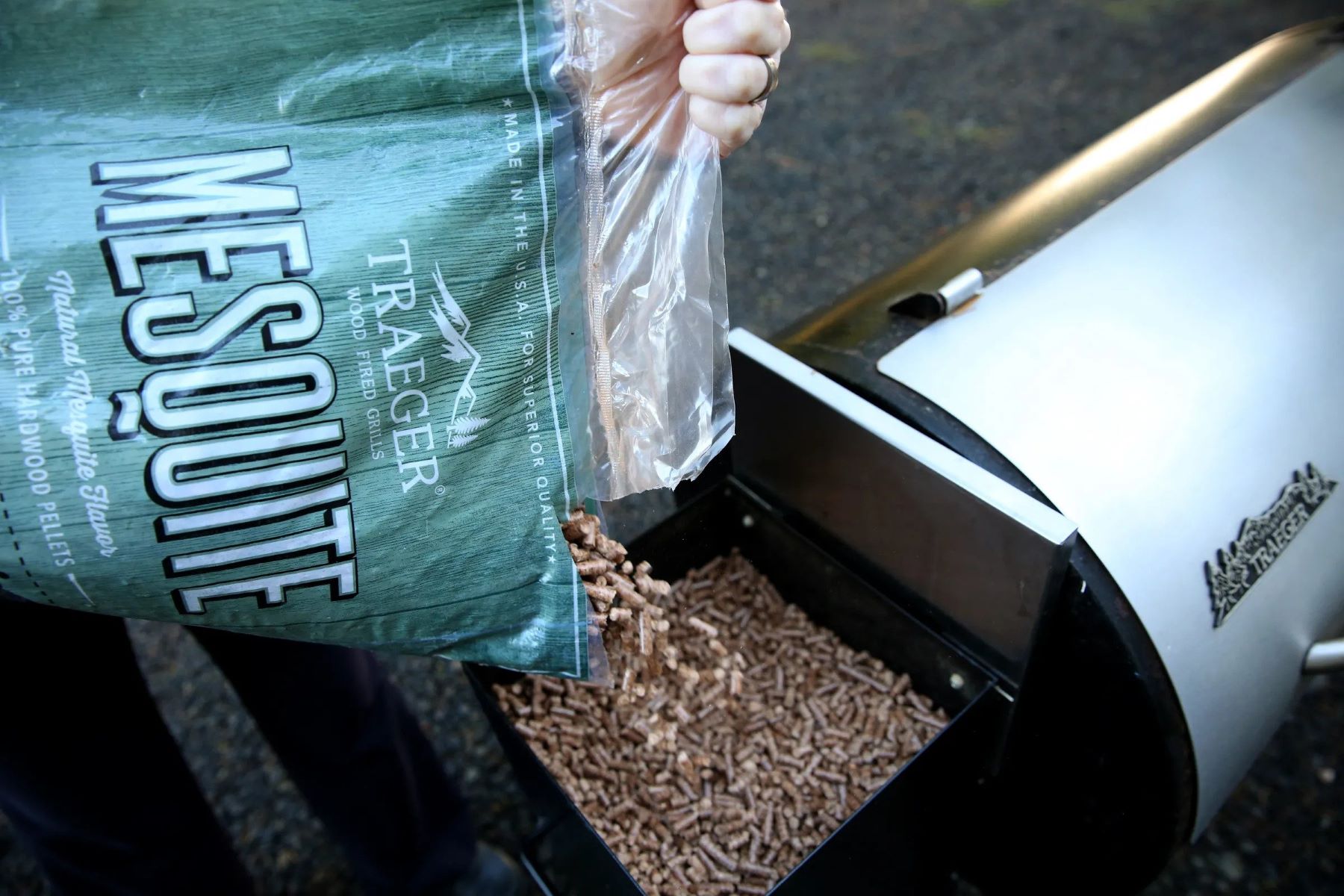
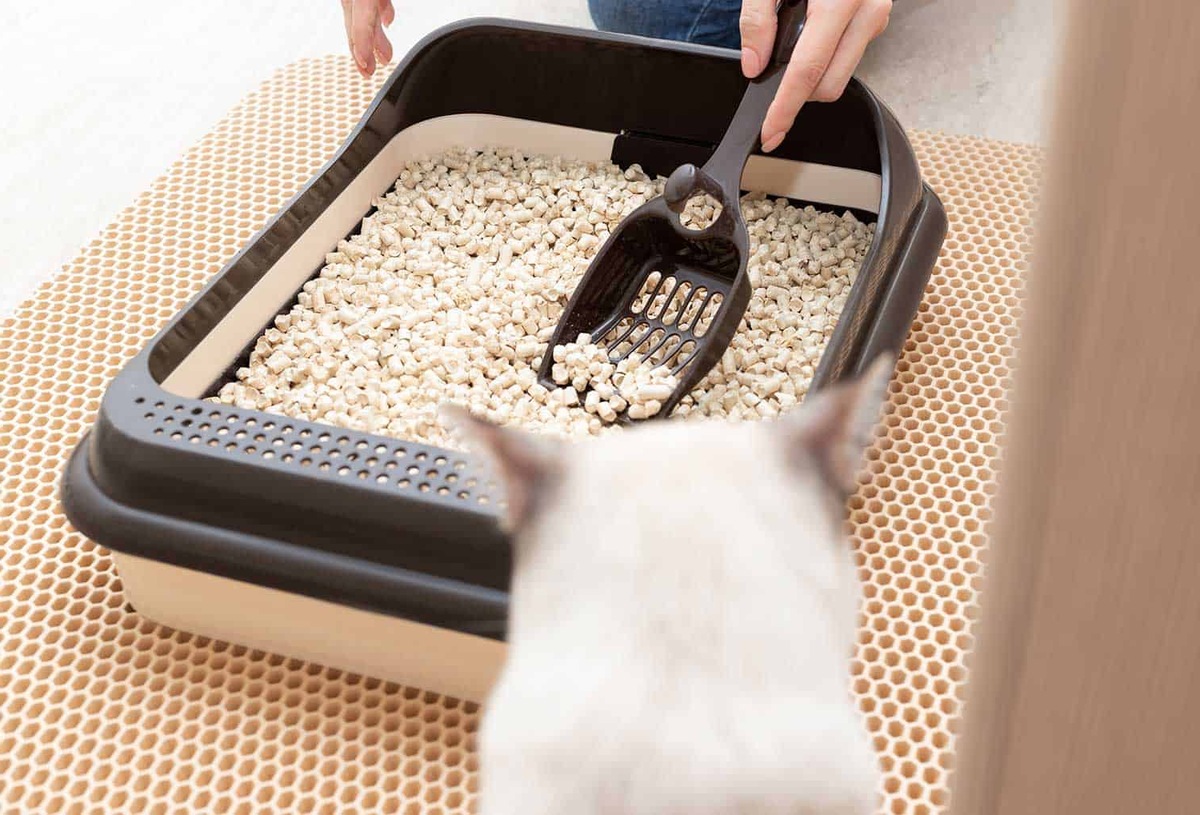
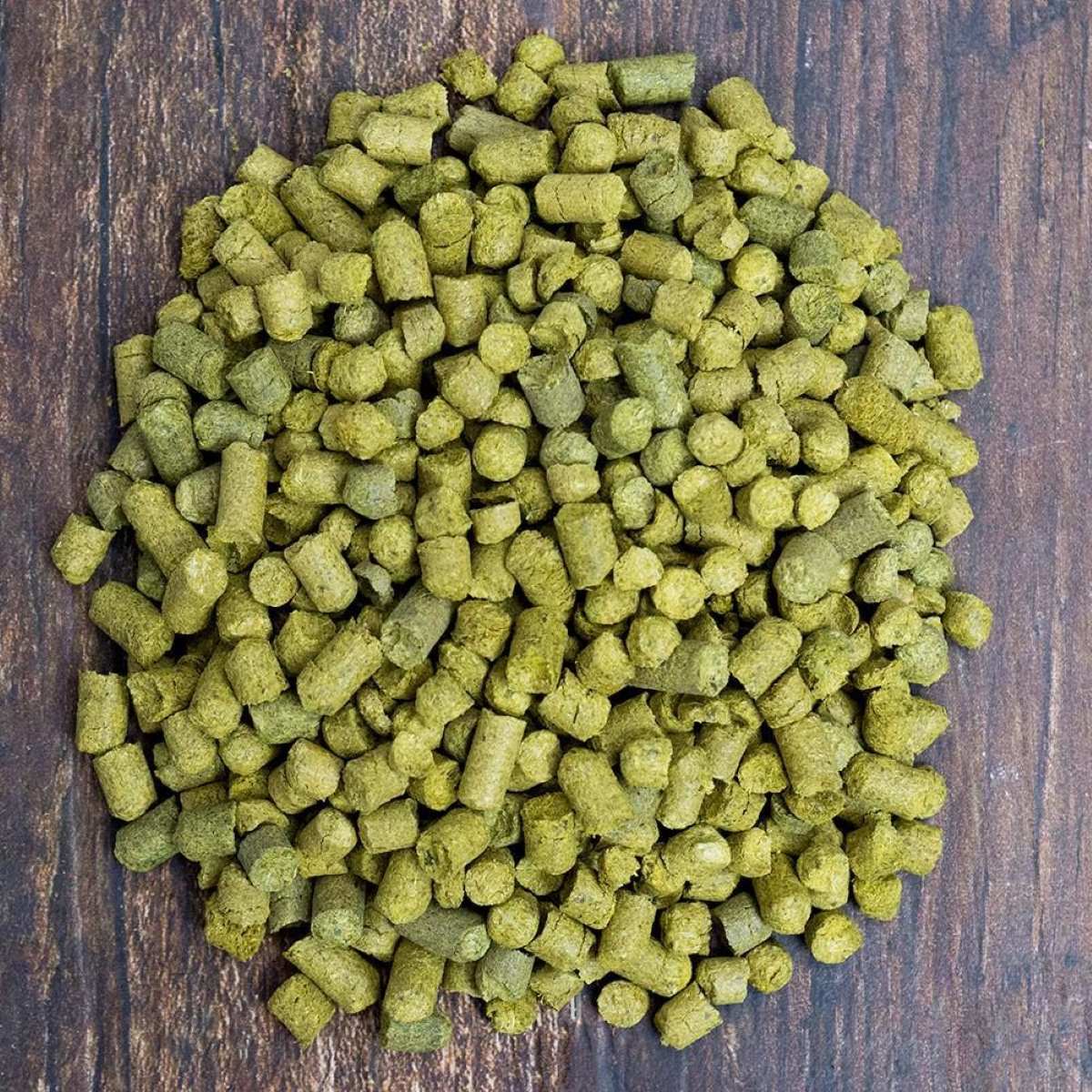

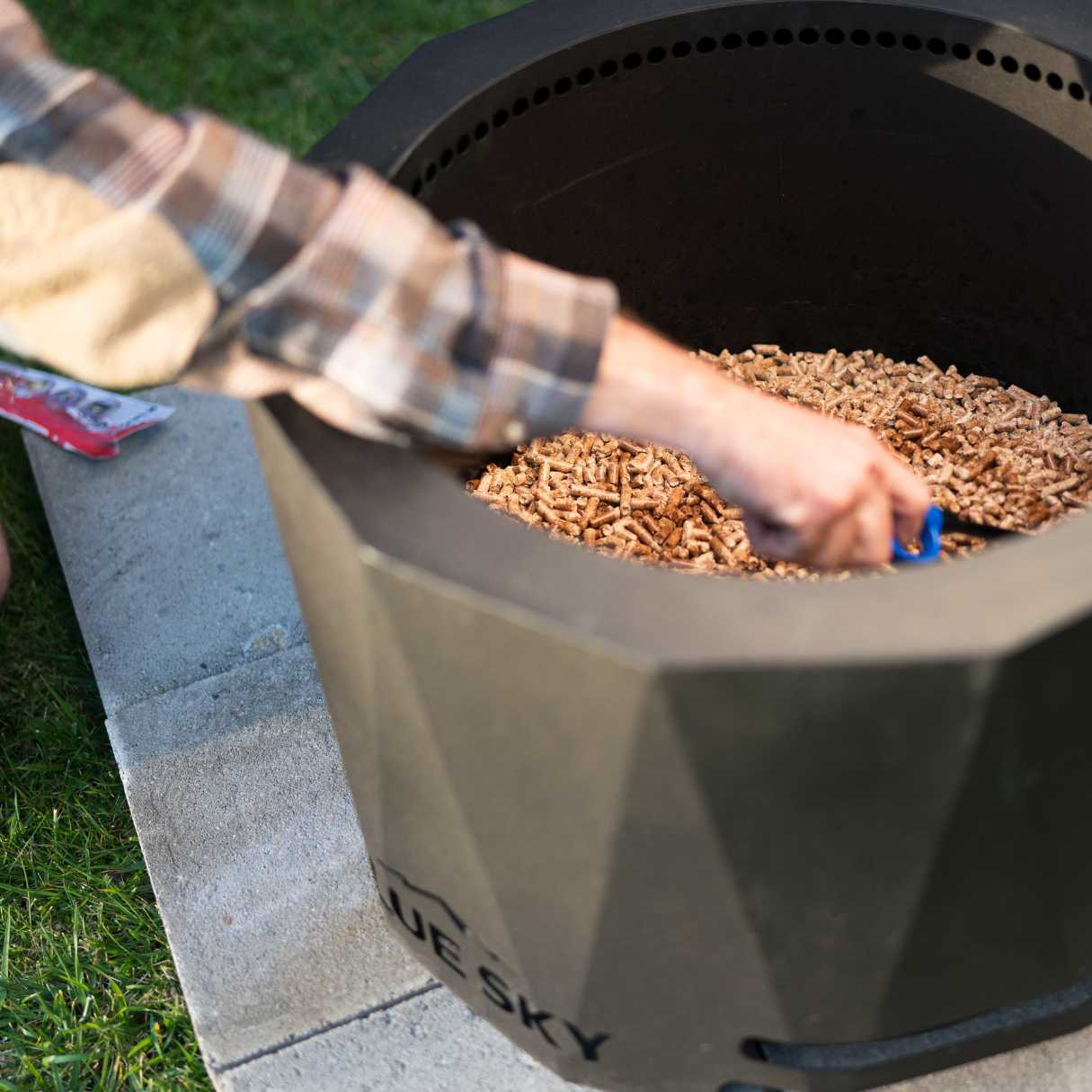
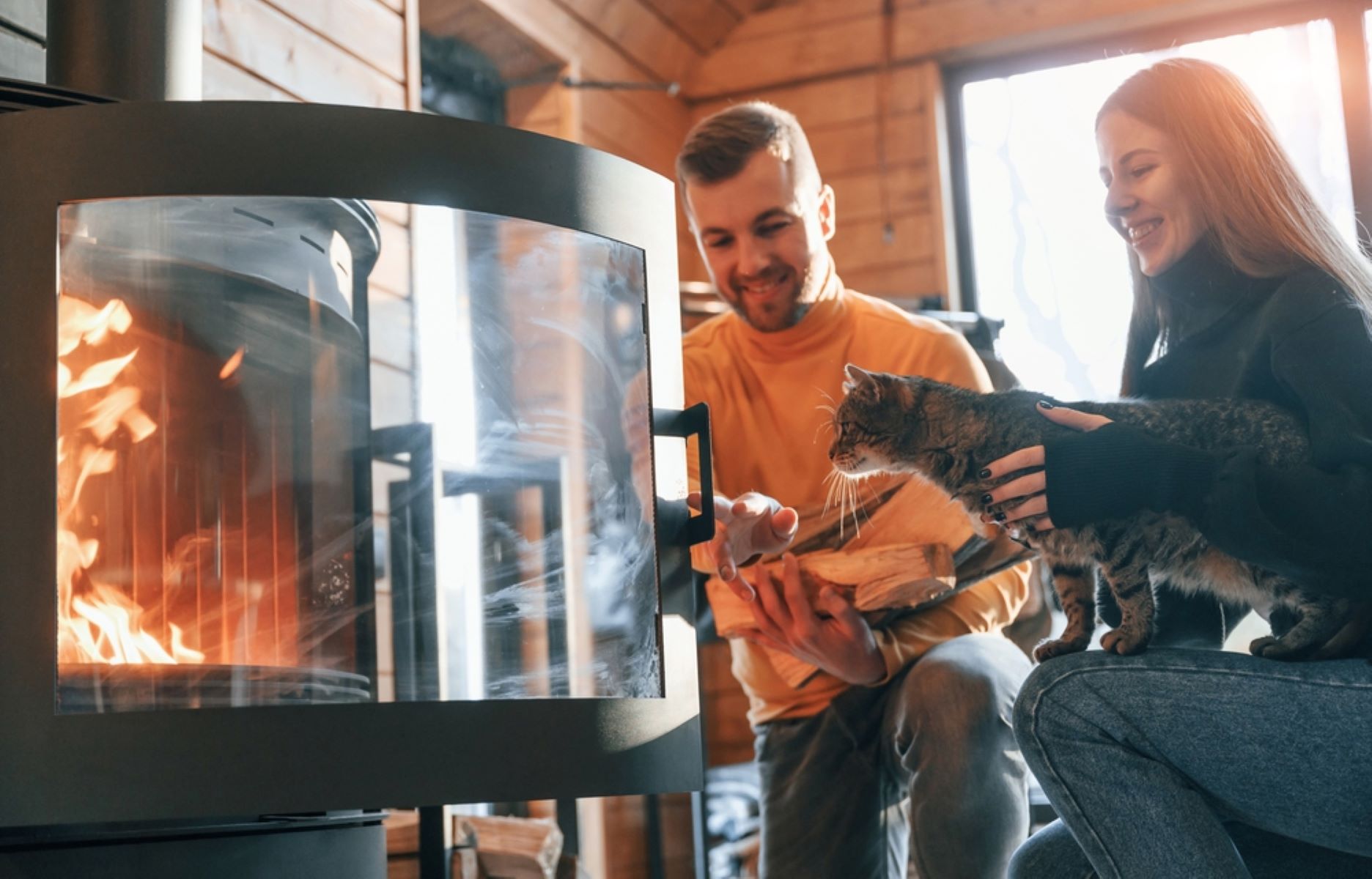
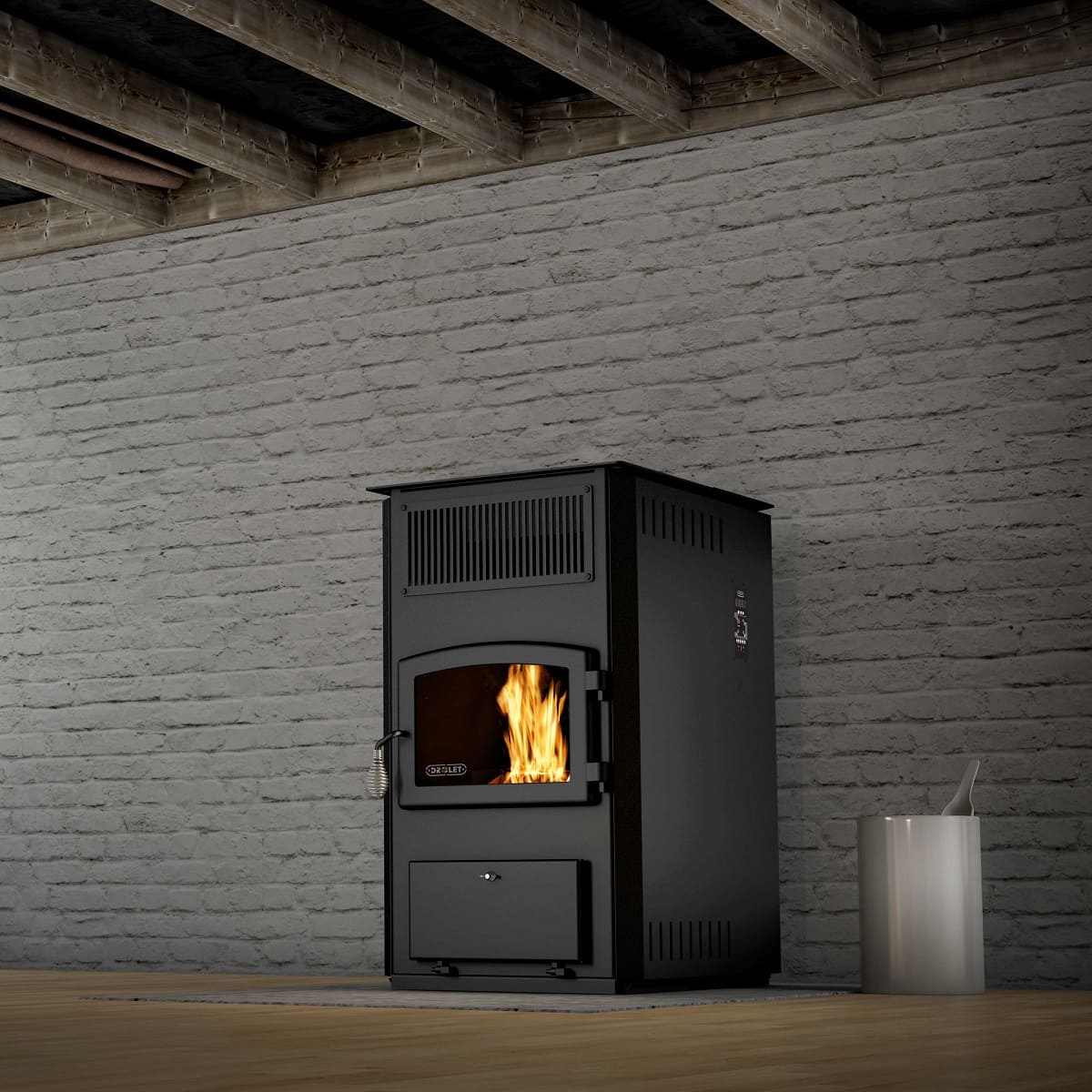
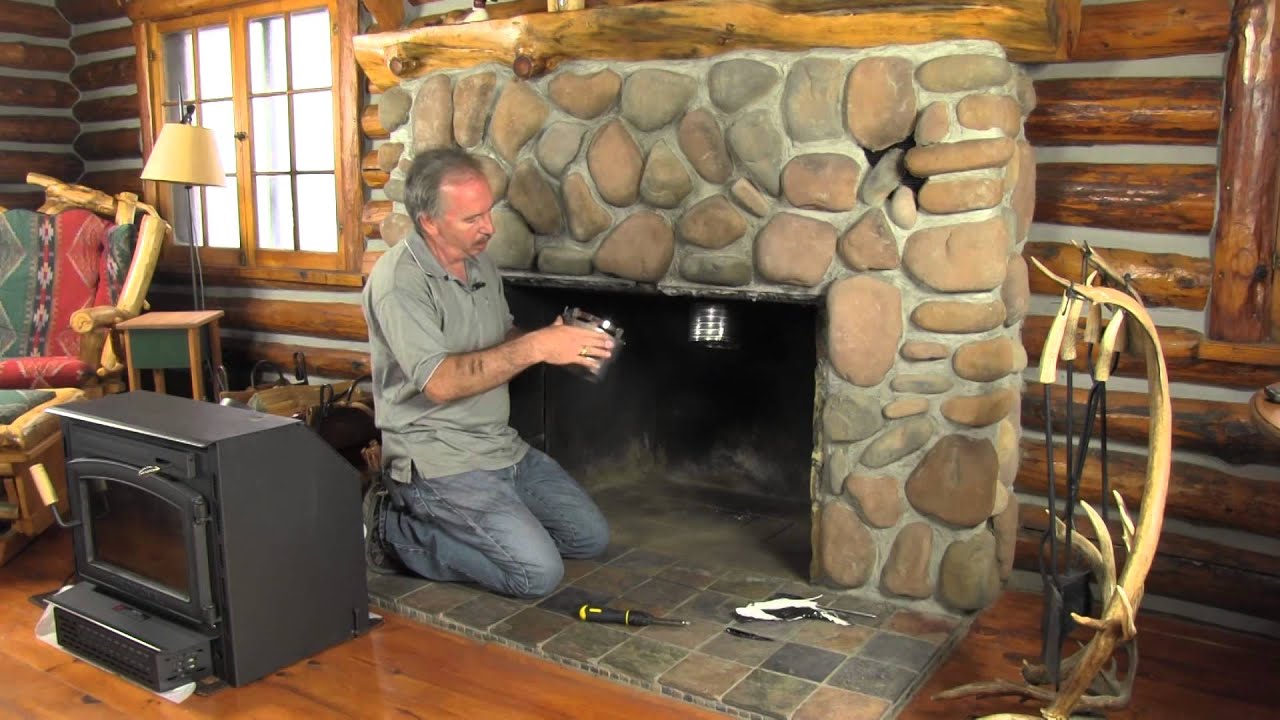
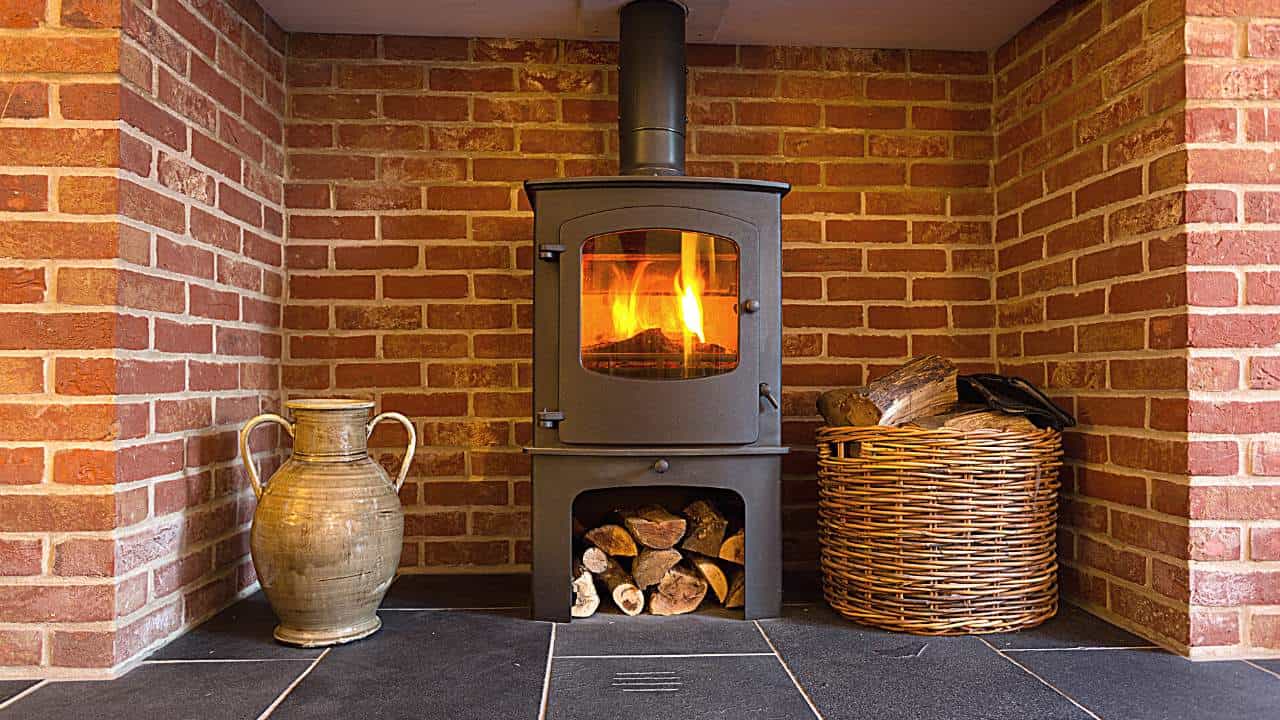
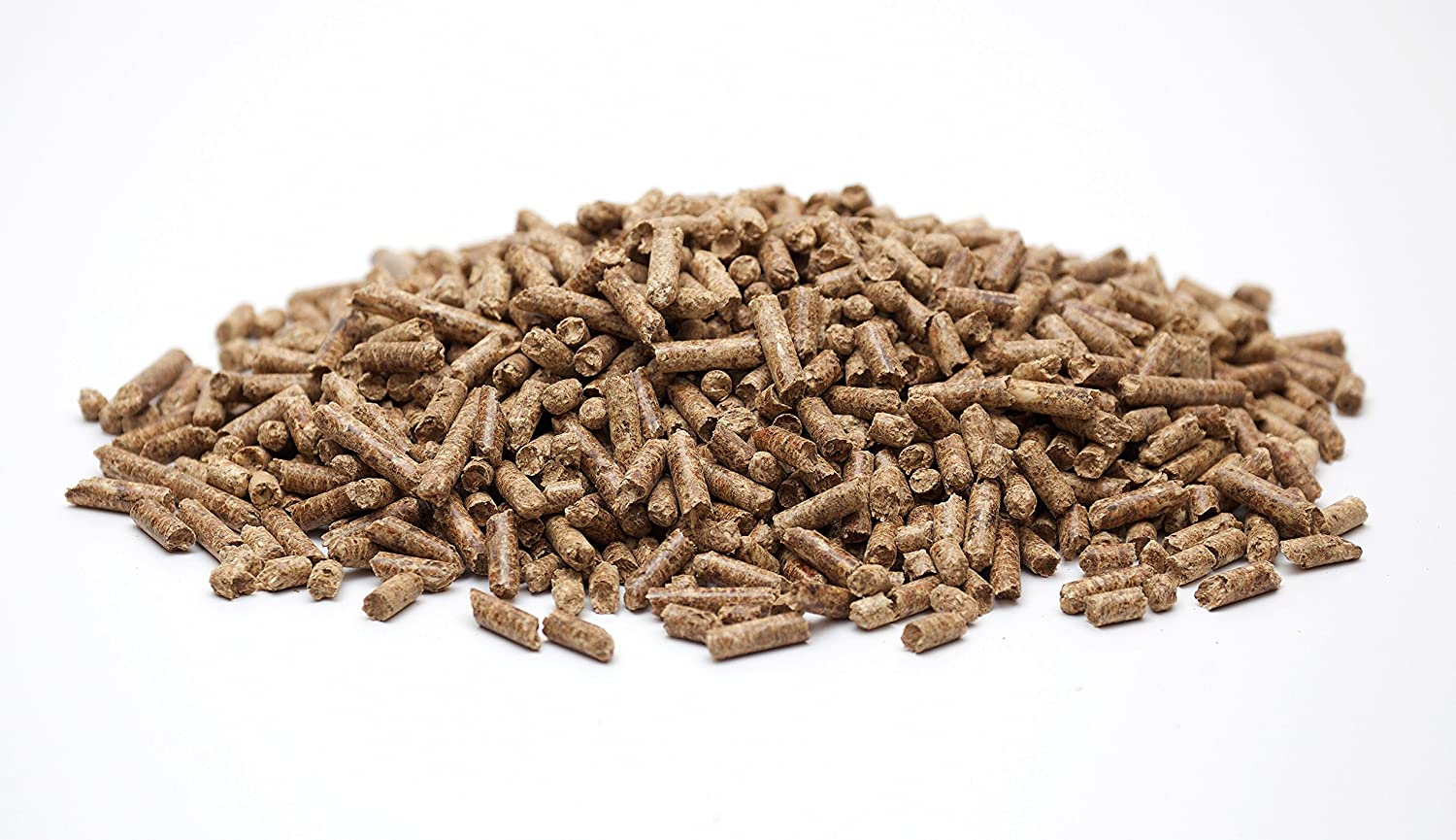

0 thoughts on “How Pellet Grills Work”